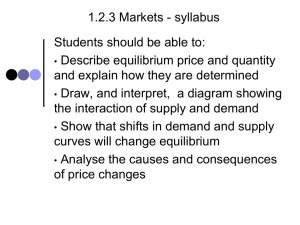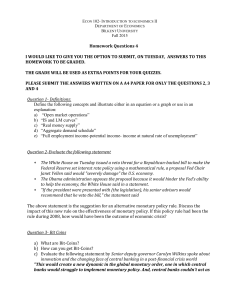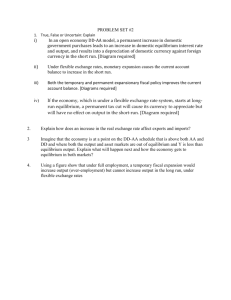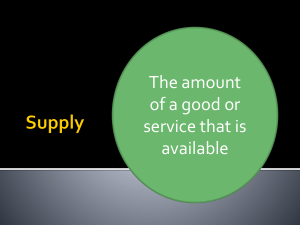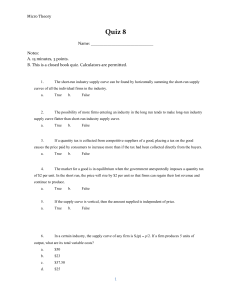Supply and Demand Review Sheet
advertisement
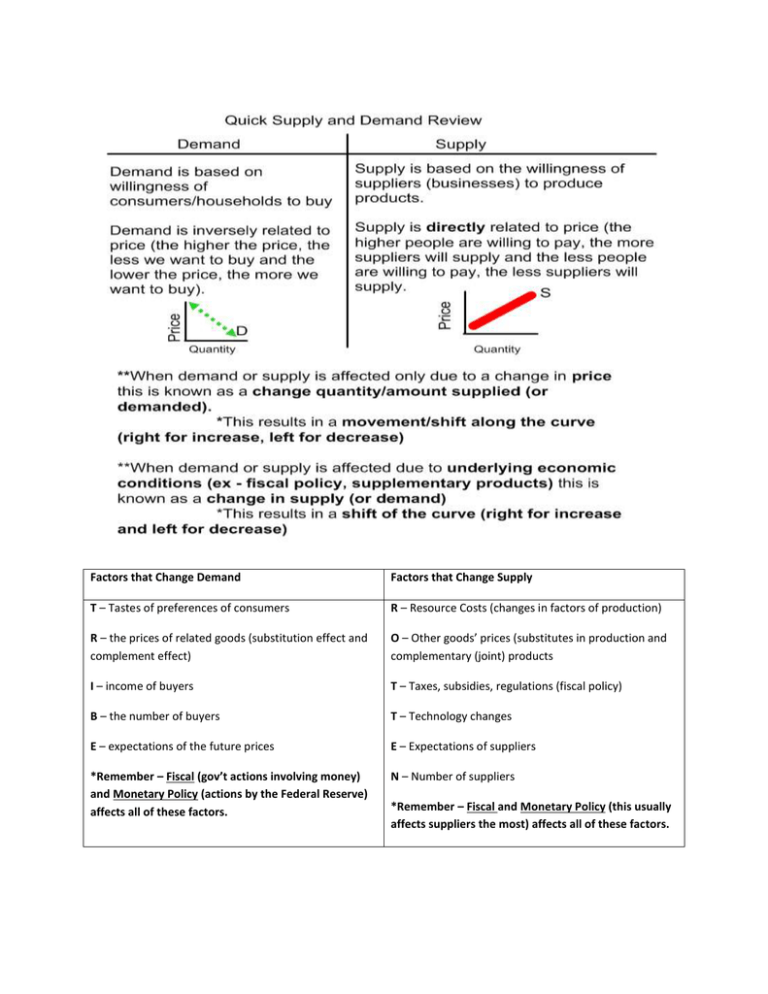
Factors that Change Demand Factors that Change Supply T – Tastes of preferences of consumers R – Resource Costs (changes in factors of production) R – the prices of related goods (substitution effect and complement effect) O – Other goods’ prices (substitutes in production and complementary (joint) products I – income of buyers T – Taxes, subsidies, regulations (fiscal policy) B – the number of buyers T – Technology changes E – expectations of the future prices E – Expectations of suppliers *Remember – Fiscal (gov’t actions involving money) and Monetary Policy (actions by the Federal Reserve) affects all of these factors. N – Number of suppliers *Remember – Fiscal and Monetary Policy (this usually affects suppliers the most) affects all of these factors. EQUILIBRIUM PRICE AND QUANTITY Equilibrium/Market Price: The price at which supply and demand intersect/are equal - a price that is established by the free market. The price at which suppliers are willing to sell and consumers are willing to buy for this same price. (shown graphically as "p") Equilibrium/Market Quantity: The quantity for which the supply and demand for a product are equal (shown graphically as "q") When the shift occurs, label the second equilibrium price and equilibrium quantity p1 and q1. When the graph shifts for one curve there is always a movement along the curve of the other curve. Example: National Income rises. This is an increase in the change in demand. Consumers demand more, which raises the price (p to p1). Since there is now a change in price consumers are willing to pay, there is a change in quantity supplied (q to q1). Suppliers are now supplying now at a higher price. Ambiguity (Ambiguousness) or Indeterminate: - When both demand and supply are changing, one of the equilibrium outcomes (price or quantity) is predictable and one is ambiguous (indeterminate) - Before combining the two shifting curves, predict changes in price and quantity for each shift by itself - The variable that is rising in one case and falling in the other case is your ambiguous prediction. Example:




